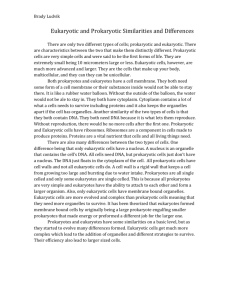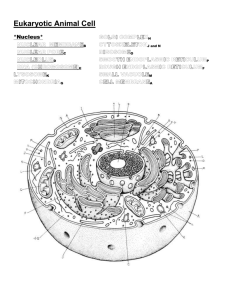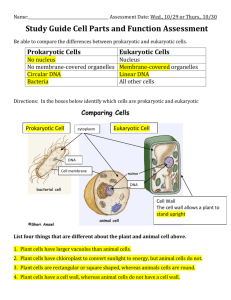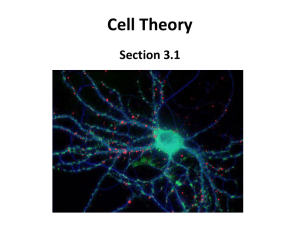The eukaryotic cell contains organelles, which are defined as
advertisement
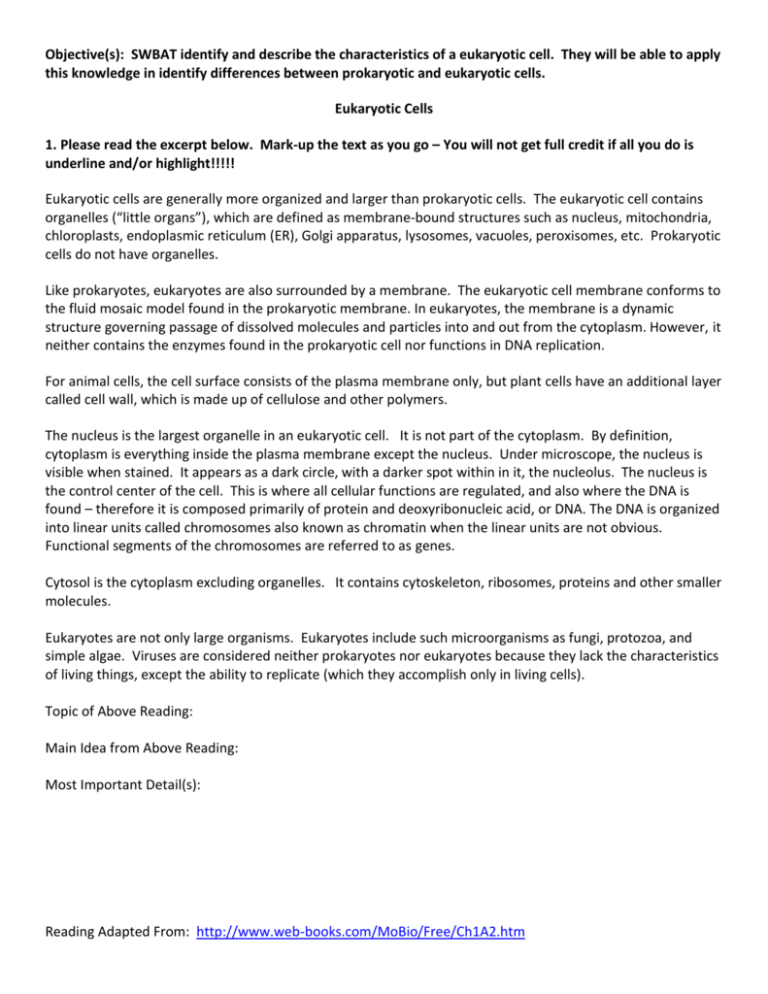
Objective(s): SWBAT identify and describe the characteristics of a eukaryotic cell. They will be able to apply this knowledge in identify differences between prokaryotic and eukaryotic cells. Eukaryotic Cells 1. Please read the excerpt below. Mark-up the text as you go – You will not get full credit if all you do is underline and/or highlight!!!!! Eukaryotic cells are generally more organized and larger than prokaryotic cells. The eukaryotic cell contains organelles (“little organs”), which are defined as membrane-bound structures such as nucleus, mitochondria, chloroplasts, endoplasmic reticulum (ER), Golgi apparatus, lysosomes, vacuoles, peroxisomes, etc. Prokaryotic cells do not have organelles. Like prokaryotes, eukaryotes are also surrounded by a membrane. The eukaryotic cell membrane conforms to the fluid mosaic model found in the prokaryotic membrane. In eukaryotes, the membrane is a dynamic structure governing passage of dissolved molecules and particles into and out from the cytoplasm. However, it neither contains the enzymes found in the prokaryotic cell nor functions in DNA replication. For animal cells, the cell surface consists of the plasma membrane only, but plant cells have an additional layer called cell wall, which is made up of cellulose and other polymers. The nucleus is the largest organelle in an eukaryotic cell. It is not part of the cytoplasm. By definition, cytoplasm is everything inside the plasma membrane except the nucleus. Under microscope, the nucleus is visible when stained. It appears as a dark circle, with a darker spot within in it, the nucleolus. The nucleus is the control center of the cell. This is where all cellular functions are regulated, and also where the DNA is found – therefore it is composed primarily of protein and deoxyribonucleic acid, or DNA. The DNA is organized into linear units called chromosomes also known as chromatin when the linear units are not obvious. Functional segments of the chromosomes are referred to as genes. Cytosol is the cytoplasm excluding organelles. It contains cytoskeleton, ribosomes, proteins and other smaller molecules. Eukaryotes are not only large organisms. Eukaryotes include such microorganisms as fungi, protozoa, and simple algae. Viruses are considered neither prokaryotes nor eukaryotes because they lack the characteristics of living things, except the ability to replicate (which they accomplish only in living cells). Topic of Above Reading: Main Idea from Above Reading: Most Important Detail(s): Reading Adapted From: http://www.web-books.com/MoBio/Free/Ch1A2.htm 2. Please observe the picture of the eukaryotic cell below. Use the picture and the text above to answer the following questions. 1. What makes a eukaryotic cell “eukaryotic”? ___________________________________________________ __________________________________________________________________________________________ 2. What are organelles? Why are they celled organelles? __________________________________________ __________________________________________________________________________________________ 3. What role does the cell membrane play in eukaryotic cells? ______________________________________ __________________________________________________________________________________________ 4. What do plant cells have that animal cells do not? What purpose might this structure have? __________ __________________________________________________________________________________________ 5. What is the nucleus? What does it do? Why is it so important? What does it hold? __________________ __________________________________________________________________________________________ __________________________________________________________________________________________ 6. Explain the difference between cytoplasm and cytosol. _________________________________________ __________________________________________________________________________________________ 7. We usually associate eukaryotic cells with large plants and animals. Explain why this isn’t the case. __________________________________________________________________________________________ __________________________________________________________________________________________



